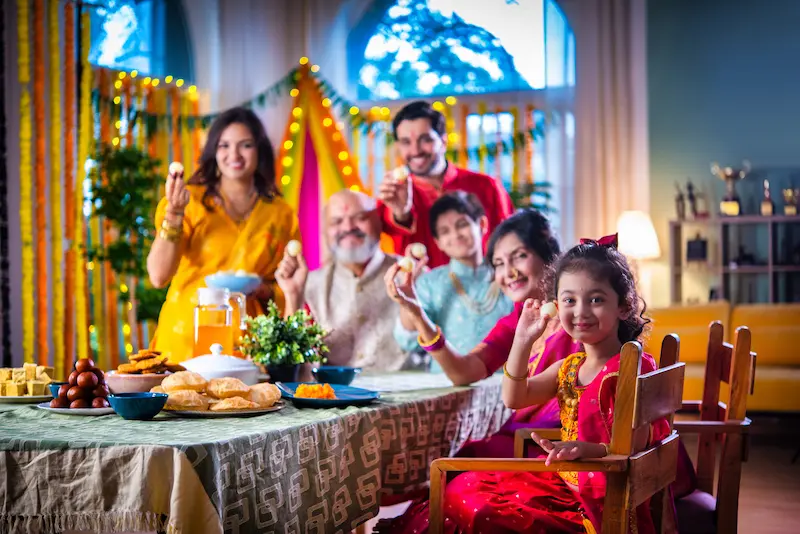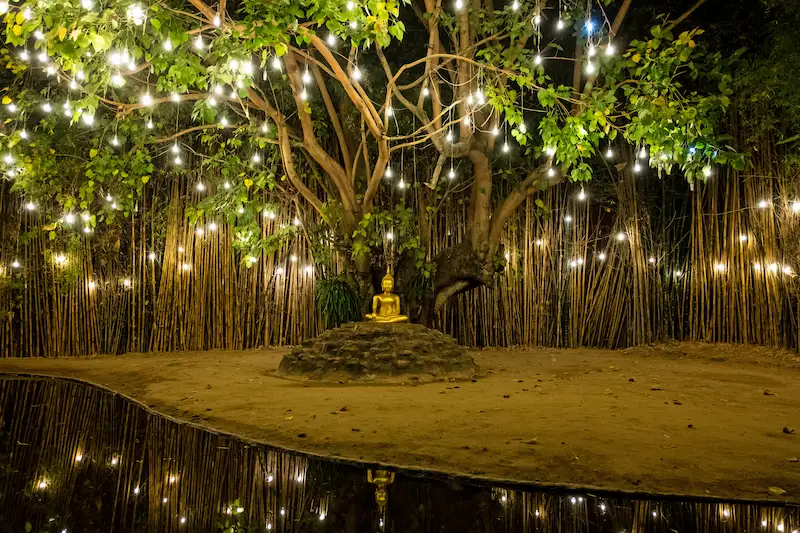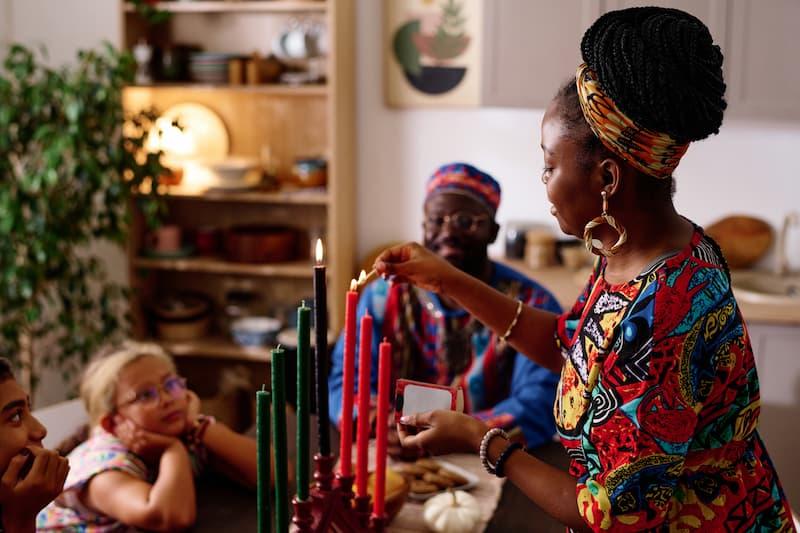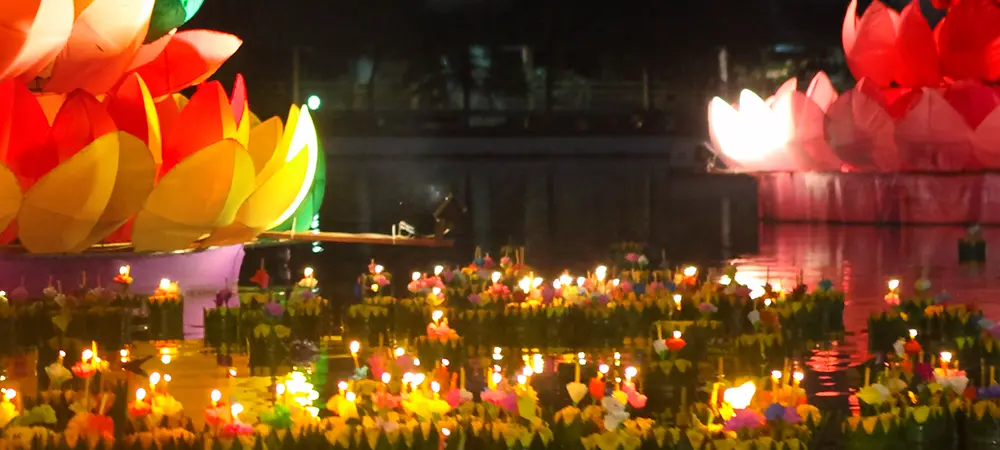Holiday lights play an important role in bringing people together. Around the world, different cultures use light to represent hope, unity, and renewal, especially during challenging times. Candles on windowsills, lanterns floating into the night sky, and festive displays reflect the shared belief that light can lift spirits and foster connection.
This article explores how various traditions incorporate light into their celebrations. From the gentle glow of Christmas tree lights to the colorful bursts of fireworks during Diwali, each culture brings its own brilliance to the season.
Diwali: The Festival of Lights in India

Diwali is celebrated across India and by millions around the world. It’s a holiday that represents the victory of light over darkness and good over evil. Diwali usually takes place between October and November, with people coming together to mark the return of Lord Rama after years of exile, as told in the ancient story of the Ramayana. For many, it’s also a time to honor Goddess Lakshmi, the bringer of prosperity and good fortune.
Lighting the Way for a Fresh Start
As Diwali approaches, families dive into the tradition of cleaning and decorating their homes, believing that a tidy and welcoming space invites blessings from the goddess Lakshmi. Colorful rangoli designs, created with powders, sand, or flower petals, are carefully laid at doorways to add vibrant touches of beauty. The real magic happens at night when the lights are lit.
Small clay lamps called diyas, filled with oil, are placed on windowsills, balconies, and doorways, casting a warm and flickering glow throughout neighborhoods. Fireworks light up the night sky, reflecting the excitement of the celebration while symbolically driving away negativity. Families exchange gifts and homemade sweets like laddoos and barfis, spreading joy within their communities. Special prayers are also offered to Lakshmi and Ganesha, seeking good fortune, health, and wisdom for the year ahead.
The lights of Diwali serve as a reminder that even in challenging times, light always finds its way through. It’s a time for letting go of the past and embracing new beginnings with joy and optimism.
Hanukkah: The Jewish Festival of Lights

Hanukkah is an eight-day celebration observed by Jewish families worldwide. It usually takes place in November or December and commemorates a miracle from the 2nd century BCE—when a small amount of consecrated oil, enough for just one day, kept the menorah in the Temple burning for eight days. Hanukkah celebrates faith, resilience, and the enduring spirit of the Jewish people.
Keeping the Flame Alive
During Hanukkah, families come together each night to light the hanukkiah, a nine-branched candelabrum. One candle is added each evening, symbolizing the miracle of the oil that lasted eight days. The ninth candle, known as the shamash or “helper” candle, is used to light the others.
The hanukkiah is often placed near a window or doorway, shining its light outward as a symbol of faith and freedom. Families recite blessings and sing songs like “Ma’oz Tzur” during the candle-lighting ceremony, creating an atmosphere of warmth and reflection. The celebration also includes playful games with a spinning dreidel, where participants compete for chocolate coins, known as gelt. Fried foods, such as crispy potato latkes and jelly-filled doughnuts called sufganiyot, are enjoyed, representing the miracle of the oil.
The candles of Hanukkah offer light during the dark winter nights, reminding us that even a small flame can keep hope alive.
Christmas Lights: A Western Tradition

In many Western cultures, Christmas and lights go hand-in-hand. The tradition dates back to 16th-century Germany, where people lit candles on Christmas trees to symbolize Jesus as the light of the world. Over time, these candles were replaced by electric lights, making the tradition safer and easier to enjoy. Today, Christmas lights have become an essential part of the season, turning streets and homes into festive wonderlands.
The Magic of Christmas Lights
In cities across the world, communities gather for tree-lighting ceremonies to kick off the holiday season. Massive Christmas trees, like the famous one at Rockefeller Center in New York, are illuminated in front of cheering crowds, often followed by music and festivities.
Many families decorate their homes with twinkling lights, inflatable decorations, and glowing reindeer, with some neighborhoods hosting tours or friendly competitions for the best display. A star often tops the Christmas tree, representing the Star of Bethlehem that guided the Wise Men to the baby Jesus. Beyond decorations, Christmas is about bringing people together. Caroling, holiday markets, and acts of generosity encourage a sense of connection and community spirit.
During the darkest days of winter, Christmas lights spread joy, warmth, and love, reminding us of the importance of togetherness.
Loy Krathong: Thailand’s Festival of Light

Loy Krathong is a beautiful festival celebrated across Thailand during the full moon of the 12th lunar month, usually in November. The name “Loy Krathong” means “float a basket,” and the holiday is a way to pay respect to the water goddess Phra Mae Khongkha and ask for forgiveness for polluting the water. It’s also a time for people to release negative energy and make a fresh start.
A Night of Floating Lights
During Loy Krathong, families craft small floating baskets called krathongs from banana leaves, adorning them with flowers, candles, and incense. These beautiful creations are released into rivers and lakes, symbolically carrying away misfortunes and bad luck.
In northern Thailand, the Yi Peng Festival takes place at the same time, with thousands of glowing lanterns released into the night sky, creating a stunning and dream-like scene. Fireworks light up the sky, and festivities include traditional dances, beauty contests, and parades, adding to the vibrant atmosphere.
The lights of Loy Krathong represent renewal and hope, encouraging participants to release the past and embrace a brighter future.
Kwanzaa: A Celebration of African Heritage

Kwanzaa, celebrated from December 26 to January 1, honors African culture, history, and values. Founded in 1966 by Dr. Maulana Karenga, Kwanzaa was created to help African Americans connect with their roots and celebrate their community.
The Meaning Behind Kwanzaa’s Lights
Kwanzaa is centered around the kinara, a seven-branched candle holder that represents the Seven Principles: unity, self-determination, collective work, cooperative economics, purpose, creativity, and faith. Each day, a candle is lit to reflect on one of these principles, sparking conversations about how they can be lived out in everyday life.
Music, dance, storytelling, and poetry are essential parts of the celebration, honoring African heritage and culture. On December 31, families come together for the Karamu feast, a time to express gratitude and celebrate community.
The lights of Kwanzaa symbolize hope, unity, and empowerment, guiding people toward a future filled with possibility and strength.
United by Light
As different as these celebrations may seem, they all share a common thread—light represents hope, renewal, and connection. Whether it’s a lantern floating on water, a candle flickering on a windowsill, or a string of twinkling lights on a tree, these traditions remind us that light brings us together, no matter where we are in the world.
So, as you enjoy your holiday lights this season, remember that you’re part of something bigger—a global celebration of hope and unity that shines brighter than ever.
Happy Holidays!

